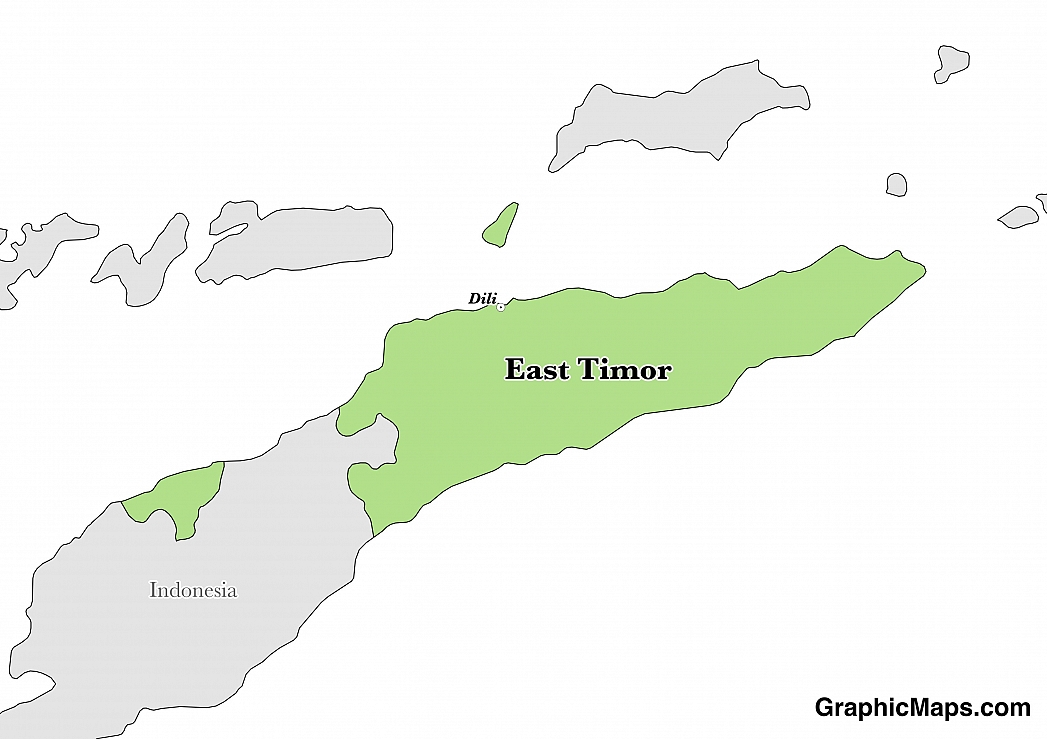The official languages of East Timor are Tetum and Portuguese although a number of other languages have been given national or working status. Due to the region’s roots as a colony of Portugal, the Portuguese language still plays an important role in the lives of people living on this island nation. Known as a western Romance language, Portuguese belongs to the Indo-European family of languages. It consists of a maximum of two semivowels, nine oral vowels, and 21 consonants. Tetum is an Austronesian language made up of 28 letters, including both uppercase and lowercase.
According to figures from 2010 about 36.6% of residents living in East Timor cited Tetum Prasa as their mother tongue. Another 12.5% spoke Mambai, 9.7% Makasai, 6% Tetum Terik, 5.9% Baikenu, 5.9% Kemak, 5.3% Bunak, 3.7% Tokodede, and 3.6% Fataluku. Another 10.9% of the population speaks an array of other indigenous languages. Approximately 600 people reported Portuguese to be their first language. Despite this low number, the use of the Portuguese language is currently on the rise. It was declared to be one of East Timor’s official languages when the country gained its independence in 2002. In 2012 it was reported that 35% of the population of East Timor could speak, read, and write Portuguese. The country is currently a member of the Community of Portuguese Language Countries.
Useful phrases in Portuguese include the casual inquiry, “Como te chamas?” which translates to “What’s your name?” A general greeting can be achieved with, “Olá”. “Good morning” can be translated to, “ Bom dia” while in the afternoon this same sentiment can be communicated with the words “Boa tarde”. This phrase needs to be altered somewhat when used during the night time hours and thus becomes, “Boa noite”. In order to wish someone a good day you can simply say, “Tem um bom dia.” Common phrases in Tetum include, “Sorte diak ba loron ohin” which translates to “Have a nice day”. Yes and no can be communicated with the words “Sin” and “Lae”.
East Timor is home to a wide variety of minority languages. Chief among them are English and Indonesian which under the country’s Constitution are considered to be working languages. Among the region’s many national languages are Atauru, Baikeno, Bekais, Bunak, Fataluku, Galoli, Habun, Idalaka, Kawaimina, Kemak, Makalero, Makasae, Makuva, Mambai, Tokodede, and Waima'a. Unfortunately six of these regional languages are in danger of dying out.
This page was last modified on May 1st, 2018
More on Graphicmaps

Published on 2019-11-06
What is a Trade Embargo?

Published on 2019-11-04
Which Two Countries Used to Have the Same Flag?

Published on 2019-09-16
What Is the Only Two-Sided State Flag?

Published on 2019-09-16
Which Country Flag Looks Like the Texas Flag?

Published on 2019-08-29
Flags That Resemble the US Flag

Published on 2019-08-20
